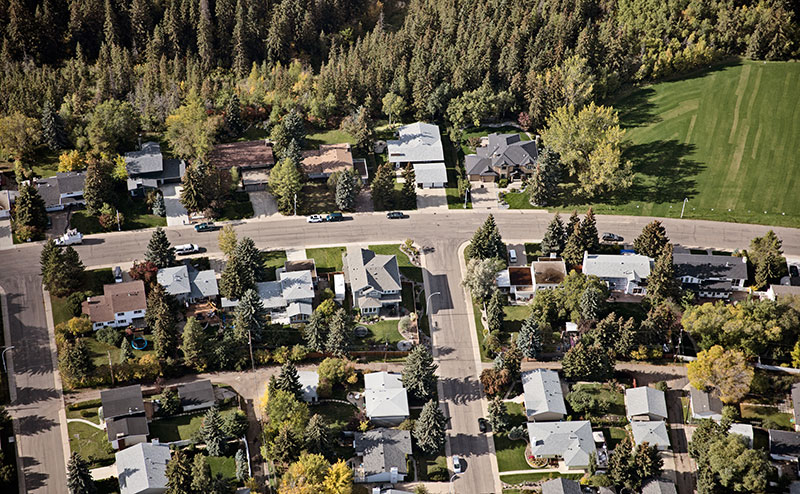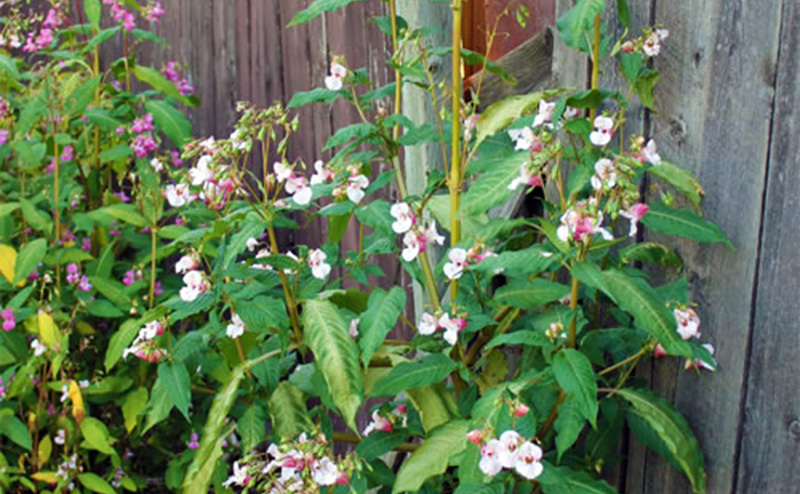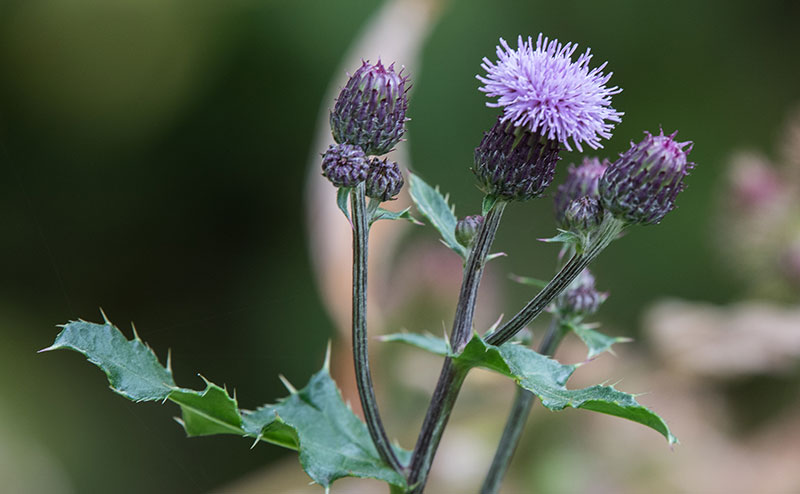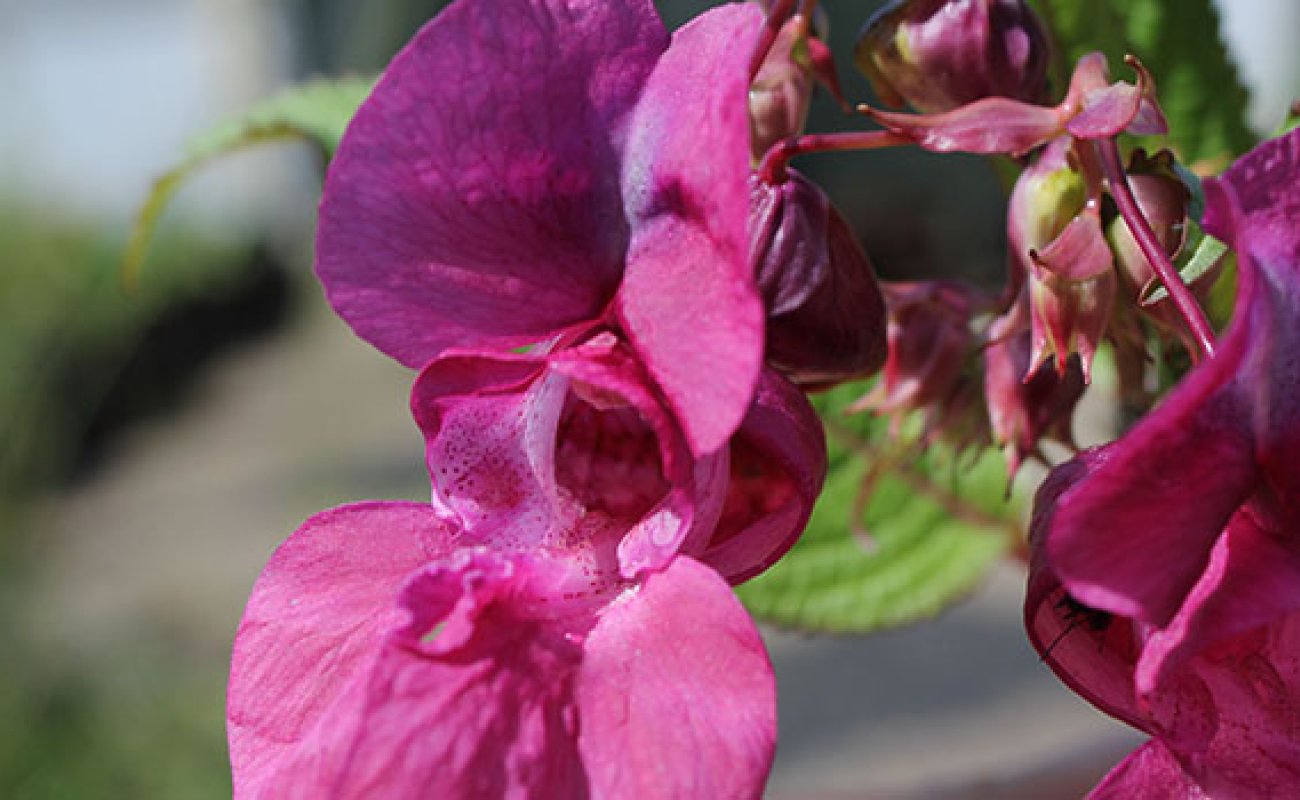The City of Edmonton is asking Edmontonians to help stop the spread of invasive weeds. Learn how to spot, report and remove invasive weeds from your property and in urban natural areas.
Spot It, Report It, Remove It
Learn how to identify and remove the weeds regulated in the Alberta Weed Control Act.
Report invasive weeds using Edmonton 311.
Regulated and Noxious Weeds
The Alberta Weed Control Regulation defines a list of regulated weeds that need to be controlled or eradicated by property owners. There are 46 prohibited noxious weeds that should be destroyed when found, and 29 noxious weeds that should be controlled and prevented from spreading. The term “noxious weeds” is sometimes used by the media and the public to refer to all the regulated weeds.
Not All Flowers Are Friendly
Many invasive plants were introduced to Canada as ornamental garden plants because they are beautiful. They can escape from gardens and farms (seeds, creeping roots, movement of infested soil or plant pieces) into natural areas, where they cause health, economic or environmental harm. These weeds can:
- Out-compete native plants for resources, reducing native biodiversity
- Grow and spread quickly, invading entire ecosystems and damaging crops
- Produce abundant seeds and can form a dense stand of single species (a monoculture)
- Alter water flow by infesting streams, riverbanks and waterways
- Contain toxins that can limit the growth of other plants, or cause harm if eaten
Stop the Spread of Weeds
To avoid spreading weeds, park users should:
- Wear clothing, boots and gear that do not retain soil or plant material; avoid brushed cotton, netting, Velcro and knits.
- Carry and use a boot brush.
- Before leaving the park, clean your shoes and bike gears of all mud and plant material.
- Check your dog for seeds, plant parts and soil before leaving the park. Use a grooming brush to remove any plant material before getting into your vehicle. Check your dog’s paw pads, ears, and nose for any seeds. If seeds are lodged in their nose or eyes, see your vet.
Frequently Asked Questions
The City of Edmonton has a Herbicide Ban Motion in place to eliminate non-essential use of herbicides on City-owned land. However, there are exemptions that allow for their use. Herbicides are used to:
- Ensure City infrastructure is safe and well-maintained, this includes use on sewer pipes, storm water facilities, concrete surfaces and along LRT routes
- Maintain cemeteries, bowling greens, premier sports fields, as well as parkland used in high-profile events
- Manage regulated weeds listed in the Alberta Weed Control Regulation
Bylaw 14600, Community Standards Bylaw, states that landowners should not have “unkempt grass or weeds higher than 10 centimetres”. This is why residents should control weeds in general.
Both private and public property owners are regulated by the Alberta Weed Control Act, which defines a list of regulated weeds that need to be controlled or eradicated by property owners. If you need help with identifying weeds, use the Weed Identification lookup tool or the online service (information only) or download the Edmonton 311 app.
- You can call 311 or submit a complaint online or on the Edmonton 311 app.
- During the growing season, there are two service requests that can be submitted online and on the Edmonton 311 app including:
- Noxious Weeds - Private Property*
- Noxious Weeds - Public Property*
*Note: these requests are intended for regulated weeds only.
A lot of invasive plants were introduced to Canada as ornamental garden plants because they are beautiful. Sometimes introduced ornamental plants escape from gardens and farms (seeds, creeping roots, movement of infested soil or plant pieces) into natural areas, where they become invasive.
For regulated/noxious weeds like Creeping Bellflower, pull these plants from the root and put them in the black garbage cart. Never place noxious weeds in your green food scraps cart or home compost. Mixing noxious weeds with your other yard waste risks spreading viable plant parts.
For yard and garden trimmings that do not contain regulated/noxious weeds, place them in the green food scraps cart or yard waste bags for seasonal pickup.
Learn what goes where with the WasteWise App.
Creeping Bellflower is listed as a noxious weed in the Alberta Weed Control Act and property owners are required to control its spread. To do this, remove the plant and dig out as much of the root as possible. Learn more at Weed Identification and Removal.
The sooner new growth is removed, the less energy can be stored in the roots of the plants. Over time, you will starve out the roots. If you can not get the whole population out, make sure to remove flowers before they produce seeds to stop seeds from going into the soil.
Contact Us
Weed Identification
Email invasiveweeds@edmonton.ca
Phone In Edmonton: 311 | Outside Edmonton: 780-442-5311
Link Online
Contact Us
Weed Enforcement
Phone In Edmonton: 311 | Outside Edmonton: 780-442-5311
Fax 780-496-6054







